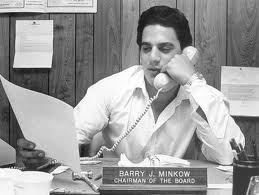 Discipline seems to be that elusive element in trading, the thing you just can’t seem to get no matter how hard you try. Its a willo-the-wisp that we’ve only heard rumours about. Do you jump from system to system, method to method, change your chart constantly and have a favourite indicator of the month? We roughly call this poor discipline.
Discipline seems to be that elusive element in trading, the thing you just can’t seem to get no matter how hard you try. Its a willo-the-wisp that we’ve only heard rumours about. Do you jump from system to system, method to method, change your chart constantly and have a favourite indicator of the month? We roughly call this poor discipline.
However I’ve discovered that there is something more fundamental underneath this behavior, which is a lack of belief in the system you are using. You have no faith in it. If you did, all such behavior and “discipline problems” would vanish in a puff of smoke.
To prove the point, consider this: imagine if I gave you a magic box, and if you put a dollar in this magic box and pulled the lever it would always dispense one dollar fifty.
What would you do? Yes thats right, you would do it over and over and over wouldn’t you? Probably for hour upon hour you would do it.
Would you at any time become bored with this magic box and go in search of a better one? Would you try to improve it or invent your own? If you had absolute faith in the fact that the box will dispense the dollar fifty I say you would have no discipline issues what so ever. You’d sit there putting in dollars and cranking the handle like maniac. (more…)


 In 1996, as a way to launch The Essays of Warren Buffett: Lessons for Corporate America, which went on to become an international bestseller, Lawrence A. Cunningham conceived of and hosted a two-day symposium at the Cardozo School of Law in New York City. Warren Buffett and Charlie Munger were, of course, the stars of the show. The proceedings were taped, and lots of photos were taken.
In 1996, as a way to launch The Essays of Warren Buffett: Lessons for Corporate America, which went on to become an international bestseller, Lawrence A. Cunningham conceived of and hosted a two-day symposium at the Cardozo School of Law in New York City. Warren Buffett and Charlie Munger were, of course, the stars of the show. The proceedings were taped, and lots of photos were taken.

 Among the fears traders face:
Among the fears traders face:
 Discipline seems to be that elusive element in trading, the thing you just can’t seem to get no matter how hard you try. Its a willo-the-wisp that we’ve only heard rumours about. Do you jump from system to system, method to method, change your chart constantly and have a favourite indicator of the month? We roughly call this poor discipline.
Discipline seems to be that elusive element in trading, the thing you just can’t seem to get no matter how hard you try. Its a willo-the-wisp that we’ve only heard rumours about. Do you jump from system to system, method to method, change your chart constantly and have a favourite indicator of the month? We roughly call this poor discipline.